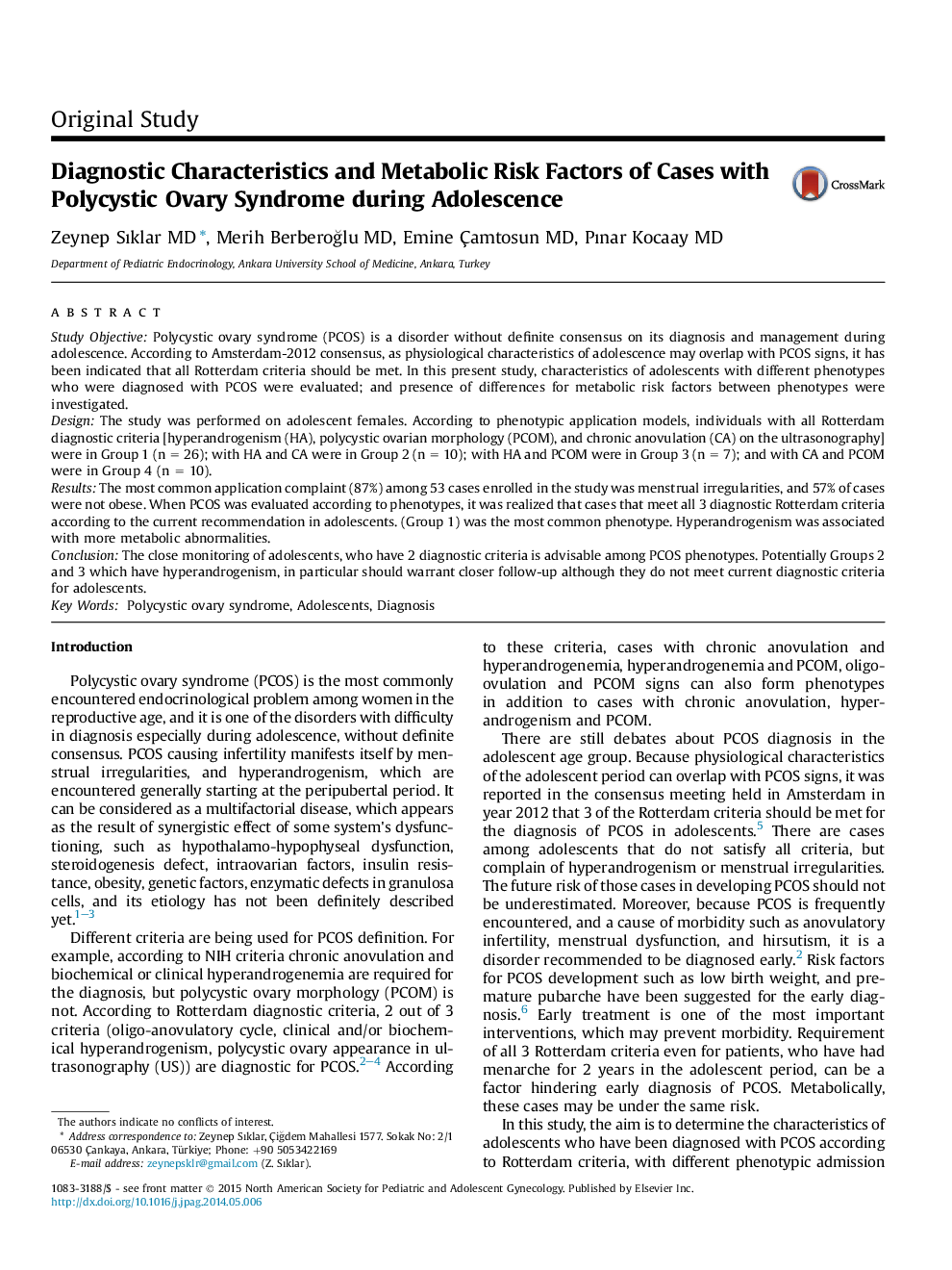| کد مقاله | کد نشریه | سال انتشار | مقاله انگلیسی | نسخه تمام متن |
|---|---|---|---|---|
| 3958251 | 1255409 | 2015 | 6 صفحه PDF | دانلود رایگان |
Study ObjectivePolycystic ovary syndrome (PCOS) is a disorder without definite consensus on its diagnosis and management during adolescence. According to Amsterdam-2012 consensus, as physiological characteristics of adolescence may overlap with PCOS signs, it has been indicated that all Rotterdam criteria should be met. In this present study, characteristics of adolescents with different phenotypes who were diagnosed with PCOS were evaluated; and presence of differences for metabolic risk factors between phenotypes were investigated.DesignThe study was performed on adolescent females. According to phenotypic application models, individuals with all Rotterdam diagnostic criteria [hyperandrogenism (HA), polycystic ovarian morphology (PCOM), and chronic anovulation (CA) on the ultrasonography] were in Group 1 (n = 26); with HA and CA were in Group 2 (n = 10); with HA and PCOM were in Group 3 (n = 7); and with CA and PCOM were in Group 4 (n = 10).ResultsThe most common application complaint (87%) among 53 cases enrolled in the study was menstrual irregularities, and 57% of cases were not obese. When PCOS was evaluated according to phenotypes, it was realized that cases that meet all 3 diagnostic Rotterdam criteria according to the current recommendation in adolescents. (Group 1) was the most common phenotype. Hyperandrogenism was associated with more metabolic abnormalities.ConclusionThe close monitoring of adolescents, who have 2 diagnostic criteria is advisable among PCOS phenotypes. Potentially Groups 2 and 3 which have hyperandrogenism, in particular should warrant closer follow-up although they do not meet current diagnostic criteria for adolescents.
Journal: Journal of Pediatric and Adolescent Gynecology - Volume 28, Issue 2, April 2015, Pages 78–83
